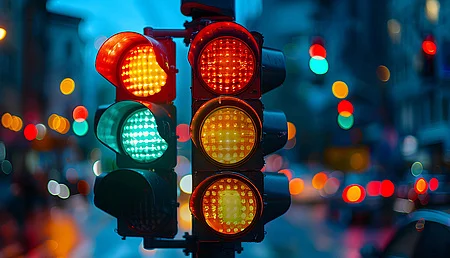
SM vs. TM: What to know and how to choose the right trademark symbol
The distinction between trademarks and service marks is ultimately a minor one, but that does not make it less important for the differences to be understood, particularly as they demonstrate the highly nuanced character of Intellectual Property (IP) classifications.
The distinction between trademarks and service marks is ultimately a minor one, but that does not make it less important for the differences to be understood, particularly as they demonstrate the highly nuanced character of Intellectual Property (IP) classifications.
The field of IP is full of symbols that are common shorthand to those in the know but that can be somewhat puzzling to the unversed. And so we will close out our miniseries on trademark registrations by tackling one of the more commonly misunderstood areas: the "SM vs. TM" question. But before addressing this matter in detail, let us take a broader look at IP symbols as a whole and examine the significance of each in its own context.
Not all IP symbols are universally understood, so a global perspective is key to ensuring no exclusive rights are lost in translation. Located in the heart of the EU, Dennemeyer's Luxembourg headquarters is the focal point of a globe-spanning network of experts in IP law.
IP categories (and why they matter)
Though the domain of IP can be divided into four primary categories — patents, trademarks, copyrights and trade secrets — the breakdown of different IP symbols does not correspond with these classes. Instead, some of the most commonplace symbols are:
- ™ — Usually in connection with an unregistered trademark
- ℠ — Usually in connection with an unregistered service mark
- © — A copyright, registered with the proper office(s)
- ℗ — A copyright symbol specifically referring to a sound recording
- ® — A registered trademark symbol, denoting that a trademark or service mark has been officially registered with at least one national IP office
While there is no specific symbol to indicate a patent, there are various ways the subject of a patent can be indicated. In the United States, for instance, one can simply affix the word "Patent" or its abbreviation "Pat." to the item, along with the patent registration number or, in some cases, the seal of the United States Patent and Trademark Office (USPTO). Similarly, there is no universal symbol identifying a trade secret.

It can be disarmingly easy to take the various types of IP for granted, but choosing the appropriate means of protection is not always a clear-cut decision. Knowing which form of IP right to apply for is crucial to saving you time and money in the long run.
The differentiation between the various IP classes is vital because of how complex the laws governing them can be. There are often lengthy debates in IP law cases regarding whether a patented piece of IP should actually have been copyrighted or whether a given trademark meets all the legal requirements. Getting the classification right from the start helps minimize the chances of opposition later on.
What is the difference between SM and TM?
A service mark serves the same essential purpose as a trademark — distinguishing the offerings of one proprietor or enterprise from those of another — while applying only to services, as opposed to products or goods.
For a clear example of the separate uses, let us imagine the experience of buying a new laptop. You settle on a model that will be ideal for your business needs such as a Lenovo ThinkPad or an Acer Swift. ThinkPad, specifically, is a well-known registered Lenovo trademark, and this is denoted by the symbol ® used immediately after the mark on the product's packaging (TM would appear in its place were the mark not registered).
Six months later, you encounter a problem with the computer. You get in touch with Geek Squad, a computer-repair subsidiary of Best Buy, and ask for a home consultation. When the technician arrives, there is a strong chance they will have driven a vehicle bearing the Geek Squad logo — a service mark that instantly identifies their brand.
When and how to use SM and TM
Beyond the contrast drawn above, trademarks and service marks are very similar — they can be words, phrases, symbols, designs or slogans with an obvious and established connection to a particular brand profile. However, neither mark is registered with a relevant office, ultimately limiting the legal protections they offer. To this end, unfair competition laws in a given city, county, state, province or territory may prevent others in those same regions from infringing your IP. Still, such statutes would be of little help if someone in another state or country did the same. This would be because the other party could reasonably argue they were not aware of your mark.

Deciding which marks to register, and where, is crucial for younger and smaller companies. With legal requirements for maintaining trademarks varying across jurisdictions, staying on top of multiple renewals can be a challenge for start-ups.
Due care should always be taken to use the correct symbol in association with goods and services as trademark offices take proper assignment in registrations very seriously. According to the USPTO's Trademark Manual of Examining Procedure: "If a registration is issued for the wrong type of mark, it may be subject to cancellation." Additionally, future disputes in opposition to your mark could cite such a mistake as an example of a deceptive or confusing practice.
Applying for a registered mark
We cannot overstate how pressing it is for you to register your trademark or service mark if you plan on monetizing your brand on a national or international scale. While you can freely use an unregistered mark in your operations, you run the risk of not being the first to file for registration. If another business successfully registers a substantially similar mark in your region, you could lose the ability to employ your own openly.
To avoid this, you must start by filing your initial trademark application with the IP regulator(s) most pertinent to where you are first doing business. You should explain the goods or services you wish the registration to be associated with, demonstrate that you are using the mark in commerce – or will be soon – and pay the filing fees mandated by your jurisdiction. You may need to answer examiners' questions as they assess whether your art can be trademarked, with responses to official queries to be filed as quickly as possible. If initial approval is denied, there are grounds for appeal, which differ significantly between jurisdictions.

When it concerns your core branding elements, the evolution from SM or TM to ® can signal the maturation of your business from a local to a national or international player.
Once your mark has been approved, you can broaden the scope of its registration by applying to the World Intellectual Property Organization (WIPO) to enter it into the Madrid System — so long as the country in which you initially filed is a Madrid signatory. There is no guarantee that a Madrid-registered mark will protect you from IP theft in every single country, but it is a vital step in the right direction.
The best way to establish the most stringent protection for your trademarks and other IP is to enlist the aid of an experienced professional from Dennemeyer & Associates. Whether your business is a neighbor of our central office in Luxembourg or an operation that crosses oceans and continents, our trademark lawyers will help you keep your brand identity safe and secure.
Filed in

Learn why brand name and trademark law matter for your business, from marketing efforts to bottom lines.



